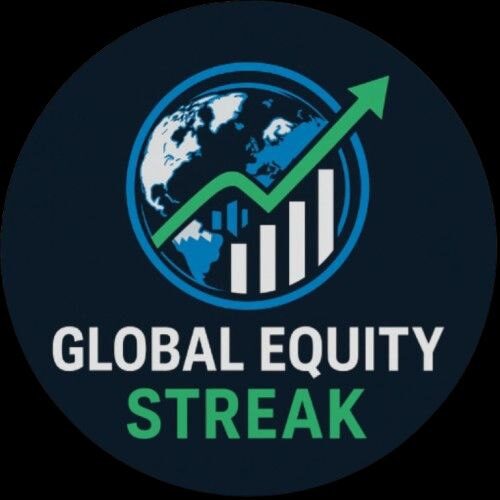VantageRock’s Avery Sheffield warns that the bond market could play a decisive role if President Trump appoints a less independent Federal Reserve Chair. She highlights economic slowdown signals, market vulnerability, and urges investors to focus on valuations and adopt a selective defensive strategy amid high risk appetite and tariff-driven inflation concerns.
Bond Market May Push Back on Less Fed Independence
Speculation continues to swirl over who will be appointed as the next Chair of the U.S. Federal Reserve under President Donald Trump’s administration. Avery Sheffield, co-founder, Chief Investment Officer, and Senior Portfolio Manager, recently shared her perspective on how the decision could impact markets, the economy, and investor strategies for the remainder of the year.
Bond Market May Push Back on Less Fed Independence:According to Sheffield, the choice of the next Fed Chair will matter significantly over the long term. Under the Trump administration, she expects the selection to be influenced by the president’s preference for a candidate who is as compliant with his policy goals as markets will permit. She noted that if Trump opts for someone with greater independence, markets may respond more positively, perceiving the decision as better for the long-term stability of the economy.
Bond Market May Push Back on Less Fed Independence:When asked whether the president is likely to choose a Fed Chair who would advocate for cutting interest rates, Sheffield agreed. “Absolutely. That’s what I’m saying,” she remarked. She explained that Trump wants a Chair who will aggressively lower rates. However, she pointed out that the bond market might push back against such moves. In the past, suggestions of significant short-term rate cuts have led to opposite reactions in long-term yields, complicating the administration’s expectations. This potential market resistance could influence the final decision on who gets appointed.
Bond Market May Push Back on Less Fed Independence:Sheffield emphasized that the market tends to react best when the Fed’s actions are in line with economic data. At present, she sees signs that the central bank is carefully weighing risks to the economy against the potential inflationary impact of new tariffs. She highlighted that recent data suggests the economy is weakening. Revisions to payroll numbers last week signaled a slowdown in hiring. Weak construction spending figures, as well as the Challenger layoff reports, indicate increased job cuts. Alarmingly, corporate bankruptcies reached a ten-year high in June, underscoring broader financial stress.
These developments, Sheffield argued, point toward the need for rate cuts to support the economy. However, she doubts the Fed will implement an aggressive 50 basis point cut due to uncertainty over how tariffs will impact inflation. Instead, any rate reduction is likely to be more measured.
On the question of market vulnerability, Sheffield was clear in her assessment: “I do think that the market is vulnerable.” She described how significant bullishness has built up in recent months, partly due to what she referred to as “post-Liberation Day” optimism. The Bank of America Fund Manager Survey in July recorded the fastest rise in three-month risk appetite since the early 2000s. This surge pushed risk appetite to a five-month high.
However, Sheffield cautioned that this wave of optimism has been accompanied by speculative, “meme-like” behavior in the markets, which is now undergoing correction. She also noted that cash levels among investors reached lows in July, signaling heavy market positioning. This combination—high bullish sentiment, stretched valuations, and a weakening economy dependent on Fed intervention—creates a fragile backdrop for markets.
For investors who share her view and want to take a more defensive stance, Sheffield offered specific guidance. The first step, she said, is to pay close attention to valuations. In the current environment, highly valued stocks are being punished severely for even minor earnings disappointments, and she expects this trend to continue. She advised seeking out less expensive stocks, though not solely in traditionally defensive sectors.
Instead, she suggested a more selective approach, looking both at defensive stocks and certain cyclical stocks that could benefit from an eventual economic recovery if the Fed loosens policy enough to stabilize conditions. This balanced defensive-cyclical mix could allow investors to protect themselves while still having exposure to potential upside should the economy rebound.

Bond Market May Push Back on Less Fed Independence:Sheffield’s analysis comes at a critical time for U.S. markets. With slowing economic data, rising bankruptcies, and heightened uncertainty over trade policy, investors are closely watching both the Fed’s next move and the identity of its next leader. The new Chair’s stance on interest rates could shape not just market sentiment but also the broader economic trajectory in the months ahead.
Bond Market May Push Back on Less Fed Independence:While Trump’s preference for aggressive rate cuts seems clear, the reaction of the bond market, inflation risks from tariffs, and the resilience—or fragility—of the broader economy will all weigh heavily on the Fed’s decisions. For now, Sheffield’s warning is straightforward: the market is walking a tightrope, and investors would be wise to balance their optimism with caution.
Disclaimer:
This article is based on publicly available commentary and market analysis provided by Avery Sheffield of VantageRock. It is intended for informational purposes only and should not be construed as financial, investment, or trading advice. Market conditions are subject to rapid change, and readers are advised to conduct their own research or consult a qualified financial advisor before making any investment decisions.

